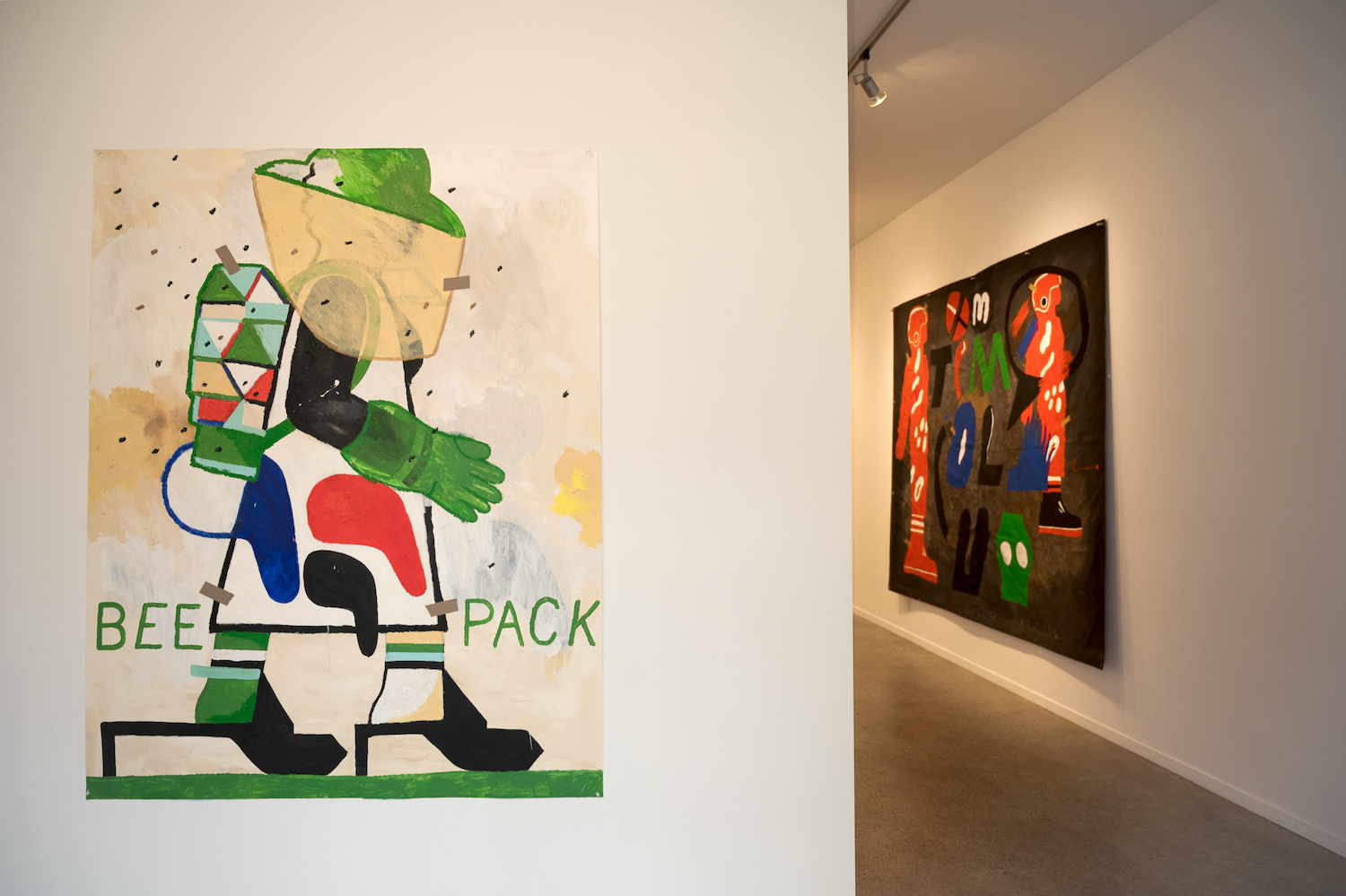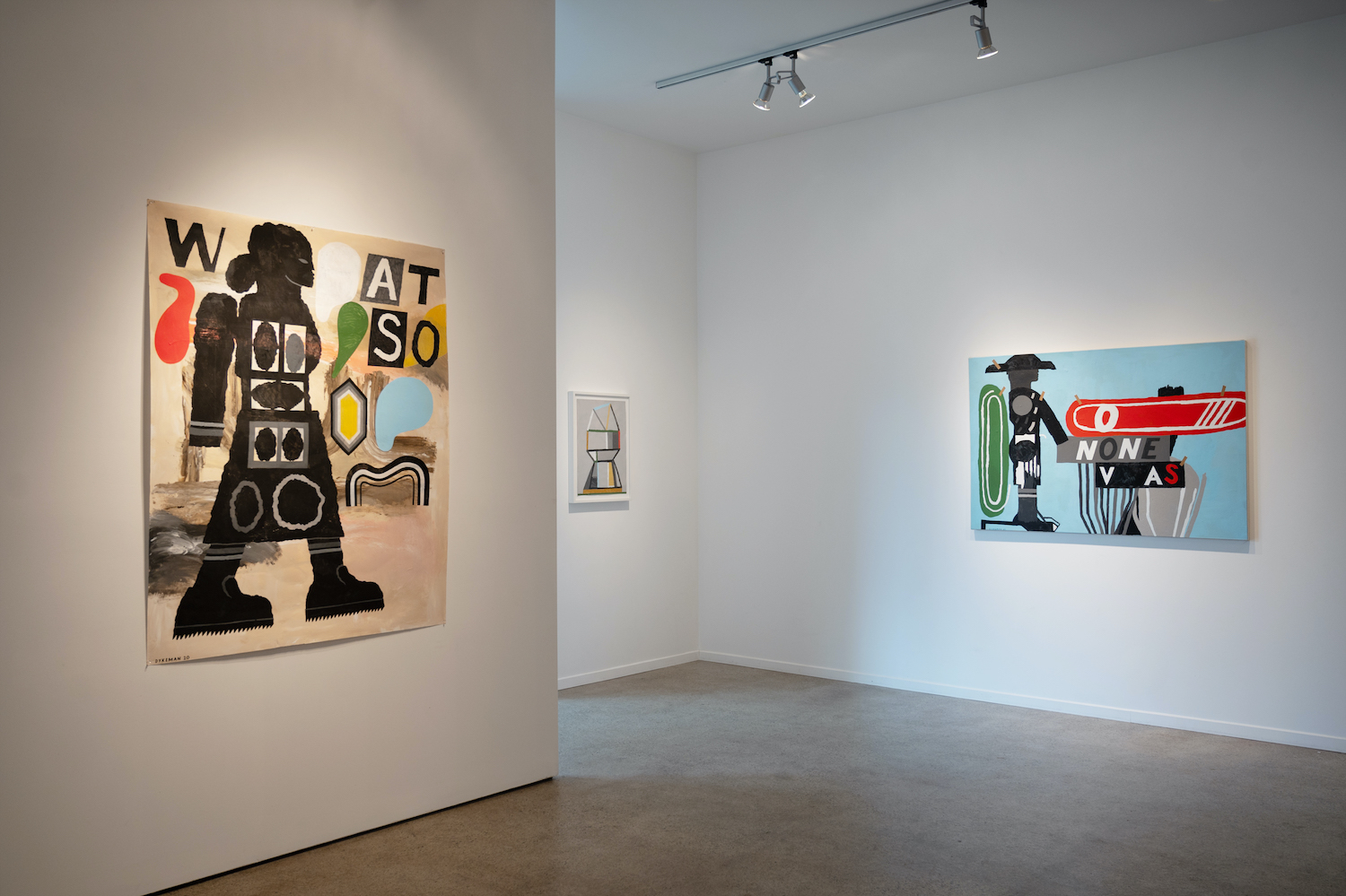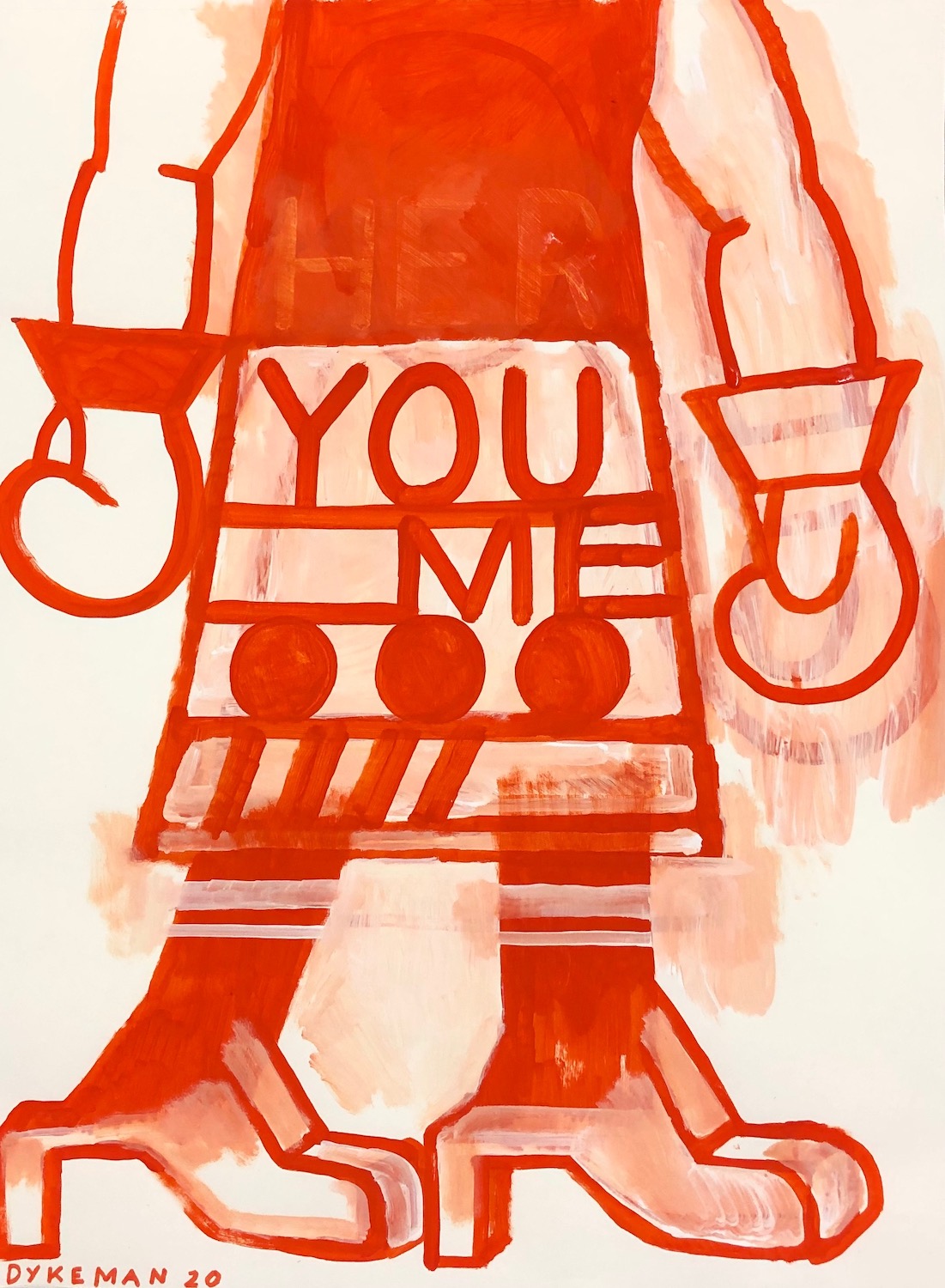Warren Dykeman
Bio | CV | warrendykeman.com | #warrendykeman | 2018 interview
Time Will No Longer Tell: Warren Dykeman
June 5 - July 17, 2021
In Time Will No Longer Tell, Warren Dykeman continues to create fascinating, humorous, and strangely familiar allegories of today’s world. There, communication breaks down into intermingling language signs and visual symbols from which sense must be made, albeit with varying rates of success. Dykeman’s paintings highlight the absurd and often hilarious nature of this game.
Over the years, Dykeman has developed his own vocabulary of visual signs (typography and its letters being a part of his collection). These do not create "meaning" per se, but can generate patterns and communication rhythms. And while the signs are uniquely Dykeman’s, and absolutely gorgeous in their nonsensical and playful way, their patterns are universal. They both signpost and make "sense" out of the pool of incoming and chaotic daily information in ways that are instinctive and funny, rather than purely logical.
Slapstick is ever-present in the often awkward encounters among the different signs/characters, where cutely naive human figures seem surprised by their own clumsiness. With too large boots, and limbs too uneven, they limp on, ever-so willing to engage with the equally puzzled—and puzzling—world. On their way, they come across solitary letters, nonsensical words, tumbleweeds, flaming wigs, and many unrecognizable objects.
Bio | CV | warrendykeman.com | #warrendykeman | 2018 interview
Time Will No Longer Tell: Warren Dykeman
June 5 - July 17, 2021
In Time Will No Longer Tell, Warren Dykeman continues to create fascinating, humorous, and strangely familiar allegories of today’s world. There, communication breaks down into intermingling language signs and visual symbols from which sense must be made, albeit with varying rates of success. Dykeman’s paintings highlight the absurd and often hilarious nature of this game.
Over the years, Dykeman has developed his own vocabulary of visual signs (typography and its letters being a part of his collection). These do not create "meaning" per se, but can generate patterns and communication rhythms. And while the signs are uniquely Dykeman’s, and absolutely gorgeous in their nonsensical and playful way, their patterns are universal. They both signpost and make "sense" out of the pool of incoming and chaotic daily information in ways that are instinctive and funny, rather than purely logical.
Slapstick is ever-present in the often awkward encounters among the different signs/characters, where cutely naive human figures seem surprised by their own clumsiness. With too large boots, and limbs too uneven, they limp on, ever-so willing to engage with the equally puzzled—and puzzling—world. On their way, they come across solitary letters, nonsensical words, tumbleweeds, flaming wigs, and many unrecognizable objects.
Slapstick is ever-present in the often awkward encounters among the different signs/characters, where cutely naive human figures seem surprised by their own clumsiness. With too large boots, and limbs too uneven, they limp on, ever-so willing to engage with the equally puzzled—and puzzling—world. On their way, they come across solitary letters, nonsensical words, tumbleweeds, flaming wigs, and many unrecognizable objects.
Mixing language signs with images on two-dimensional, grid-based surfaces, Dykeman’s art orchestrates a conundrum that loosens up all known communication tools to fashion a world of their own making. The titles of his paintings and collages, such as Bunker Cool, are frequently lifted from inside the art pieces, reinforcing the fact that meaning generated by language and other signs is based on agreement, which may be easily disestablished, and made absurd. Dykeman’s artwork may thereby be viewed as puzzles that playfully forge communication ruptures on the one hand, and bridge the schisms on the other. This puzzle-solving "game" is timeless and endless, with no beginning and no end, as the title of the show suggests. Moreover, Dykeman now collages pieces of paper onto his paintings. Used as a tape that can be infinitely moved around, they prevent the art piece from being entirely “finished.” At the same time, Dykeman is making a move towards a more painterly (and so deliberately more “messy,” as he admits) expression in his art by introducing gouache next to his acrylic and oil paint. Dykeman’s palette of mostly primary colors on soft blue and beige background is informed by the Northwest milieu; like the rest of his painterly vocabulary, they pertain to the numerous cultural layers of the geo-social substrate from which his art has grown.
Spiced up by humorous encounters between images and by slapstick situations, Dykeman’s art is ultimately underscoring the puzzling nature of today’s information and communication entropy. Decoding it is a game we all play nowadays, and that is why one experiences a resounding affinity with Dykeman’s works – not least because his kindhearted satire helps us laugh at our own clumsiness as we forge on.
-Elena Deem
Mixing language signs with images on two-dimensional, grid-based surfaces, Dykeman’s art orchestrates a conundrum that loosens up all known communication tools to fashion a world of their own making. The titles of his paintings and collages, such as Bunker Cool, are frequently lifted from inside the art pieces, reinforcing the fact that meaning generated by language and other signs is based on agreement, which may be easily disestablished, and made absurd. Dykeman’s artwork may thereby be viewed as puzzles that playfully forge communication ruptures on the one hand, and bridge the schisms on the other. This puzzle-solving "game" is timeless and endless, with no beginning and no end, as the title of the show suggests. Moreover, Dykeman now collages pieces of paper onto his paintings. Used as a tape that can be infinitely moved around, they prevent the art piece from being entirely “finished.” At the same time, Dykeman is making a move towards a more painterly (and so deliberately more “messy,” as he admits) expression in his art by introducing gouache next to his acrylic and oil paint. Dykeman’s palette of mostly primary colors on soft blue and beige background is informed by the Northwest milieu; like the rest of his painterly vocabulary, they pertain to the numerous cultural layers of the geo-social substrate from which his art has grown.
Spiced up by humorous encounters between images and by slapstick situations, Dykeman’s art is ultimately underscoring the puzzling nature of today’s information and communication entropy. Decoding it is a game we all play nowadays, and that is why one experiences a resounding affinity with Dykeman’s works – not least because his kindhearted satire helps us laugh at our own clumsiness as we forge on.
-Elena Deem











